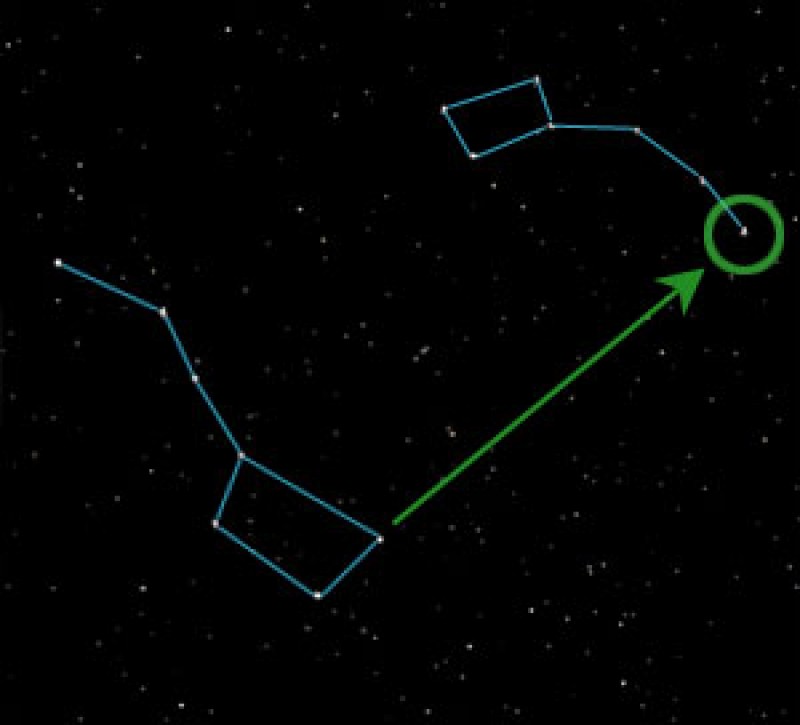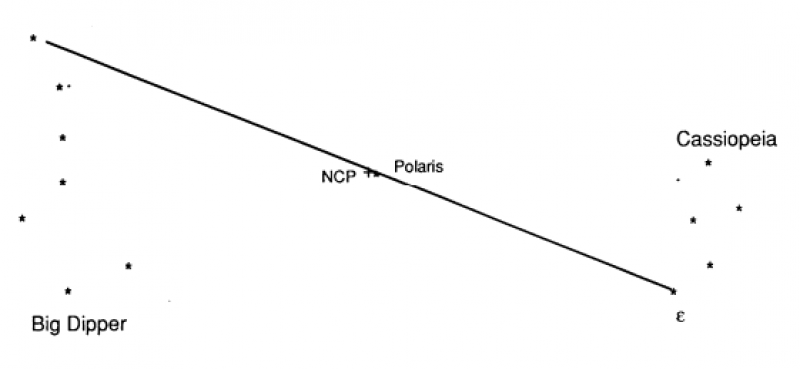 |
If a telescope’s polar axis is not aligned with (pointed at) the north Celestial Pole, any clock drive will fail to keep the telescope pointed at a chosen object. In addition, the mounting’s setting circles will not yield correct coordinates.
Long exposure astrophotography will need more accurate alignment than the methods present here. However, the needs of short exposures (a few minutes) and visual observing will usually be satisfied by these techniques.
Method 1: Alignment to Polaris
Before beginning the procedure, Polaris must be located in the finderscope. To do this, set the declination axis parallel to the ground. Then move the telescope tube in declination only and rotate the telescope base to direct-locate Polaris somewhere in the finderscope field.
Step 1: With the declination axis still parallel to the ground and Polaris in the finder field (e.g., at point a). Move the tube in the declination only until Polaris moves to the horizontal crosshair (i.e., to point b). Refer to the figure for Step 1, below.
Step 2: Rotate the mountain bases in azimuth until Polaris moves to the center of the crosshairs in the finder. Refer to the figure for Step 2, below.
Step 3: Rotate the tube 90 degrees around the polar axis until the declination axis is in the vertical plane. Polaris may have moved to some other point in the finder field (e.g., to point c). Rotate the tube around the declination axis until Polaris moves to the vertical crosshair (i.e., to point d). Refer to the figure for Step 3, below.
Step 4: Using shims or the mountain’s altitude pilot, move the entire polar axis housing until Polaris moves to the center of the finder crosshairs. Refer to the figure for Step 4 below.
 |
Method 2: Align to the Pole Using a Declination Circle
This method of polar alignment can be used only with telescopes equipped with a declination circle sufficiently accurate to read 50’ of arc displacement. Place the telescope base so that it is pointing roughly toward Polaris. Method 1 can be used for this preliminary alignment, but simply sighting along the tube is probably sufficient.
By direct location, point the telescope tube at epsilon Cassiopeia and lock the polar axis. You have set the right ascension of Polaris which is the same as e. Cassiopeia. Refer to the figure showing Cassiopeia and the Big Dipper.
Next, set the telescope to +89-degrees, 10’ declination according to the declination setting circule. Be Careful to keep the telescope to the Cassiopeia side of the pole. (Note that there are two positions, one on either side of the pole that have declination 89-degrees, 10’
 |
Read more: The Astronomical League